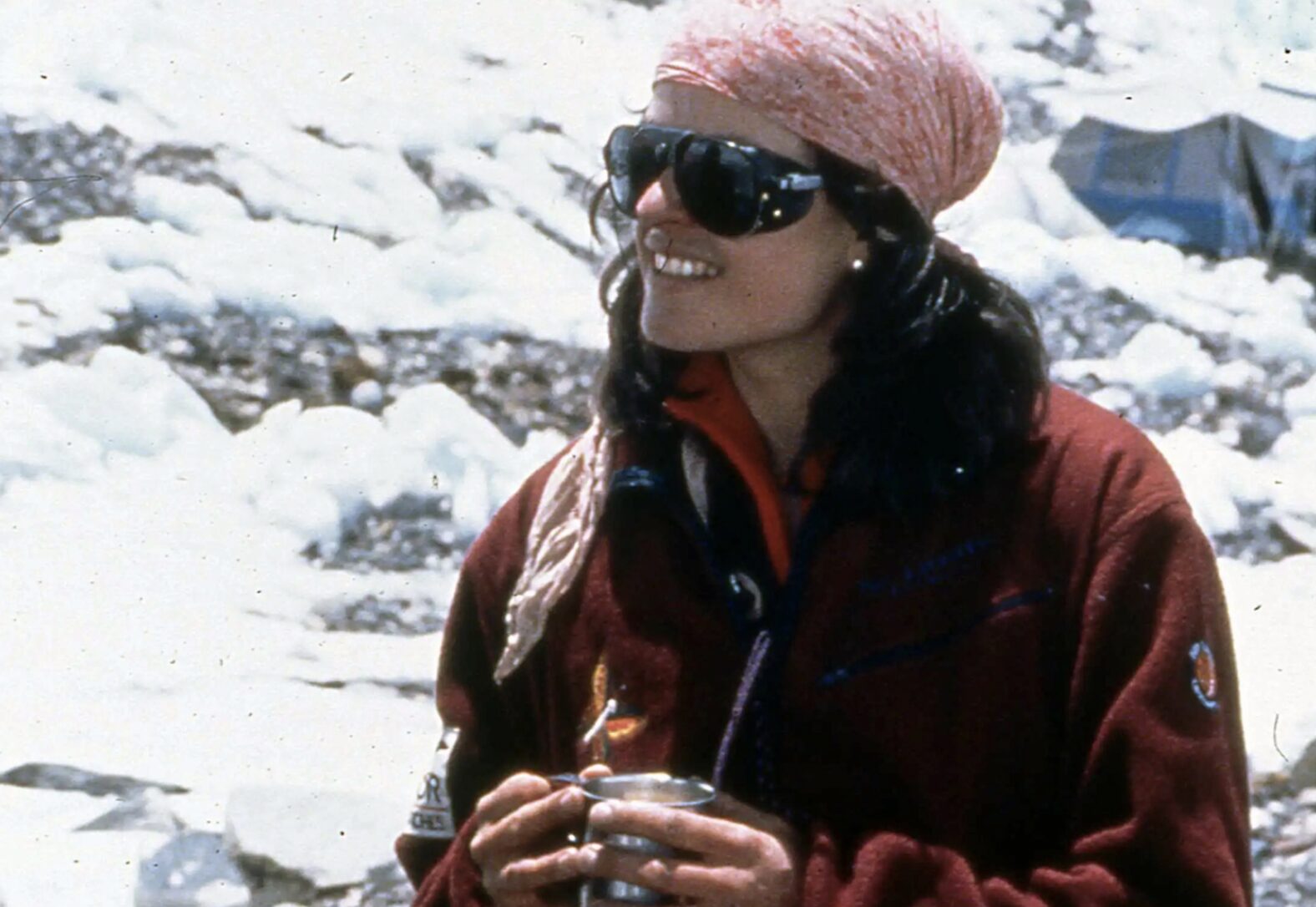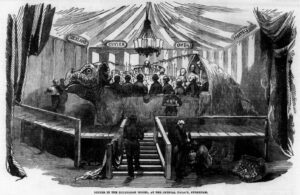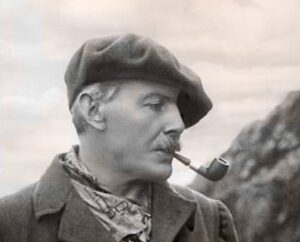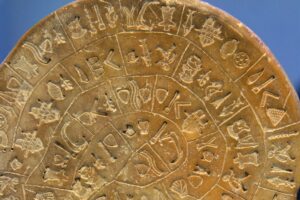In our recent article remembering French mountaineer Chantal Mauduit, we briefly touched on her 1992 rescue on K2. We noted how Scott Fischer and Ed Viesturs gave up their summit bid to bring her down safely. That short mention was just a glimpse of a complex rescue. Let’s unpack the whole event.
International teams
Although this expedition tends to be called Russian–American, it included climbers from four countries.
The mixed party was led by Russian mountaineer Vladimir Balyberdin, consisting of two Russians, a Ukrainian, 12 Americans, and an Englishman. The other members were Gennady Kopeika, Alexey Nikiforov, Doug Colwell, Neal Beidleman, Thor Kieser, Scott Fischer, Ed Viesturs, Robert Green, Peter Green, Larry Hall, Charles Mace, Daniel Mazur, Gayle Olcott, Kelly Stover, and Jonathan Pratt. The team also included a doctor and a base camp manager.
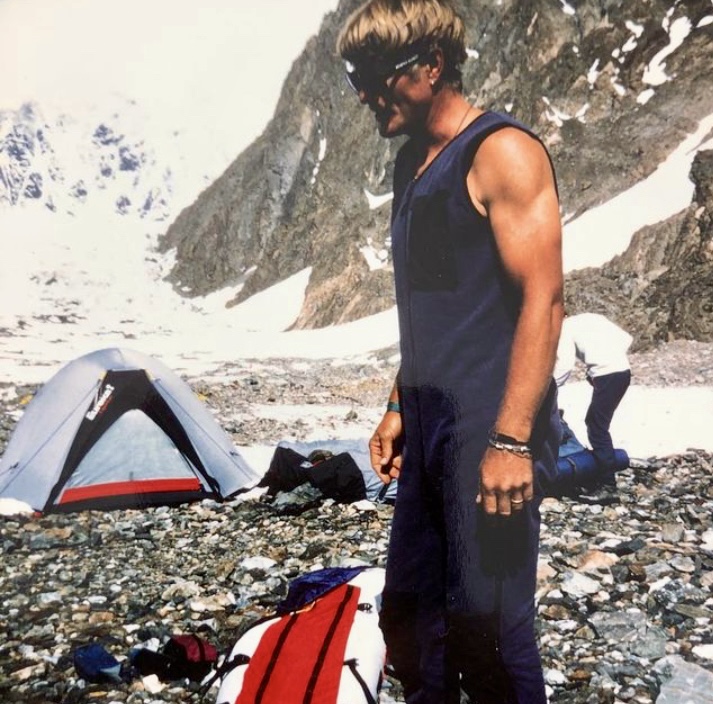
Scott Fischer at K2 Base Camp. Photo: Scott Fischer
The expedition was organized by the Russians and funded by the Americans. According to Ed Viesturs’s report, Dan Mazur was in charge of selecting the U.S. members. Scott Fischer and Ed Viesturs decided to participate when their original plans for K2’s north ridge fell through because of a lack of funding.
The Americans met in Rawalpindi on June 8, 1992. The Russians chose to travel overland and entered Pakistan one week later. The team trekked to K2 Base Camp in separate groups, with Fischer, Kieser, Viesturs, and two Americans arriving on June 21. Balyberdin, Kopeika, and Nikiforov arrived on June 30 with the rest of the expedition.
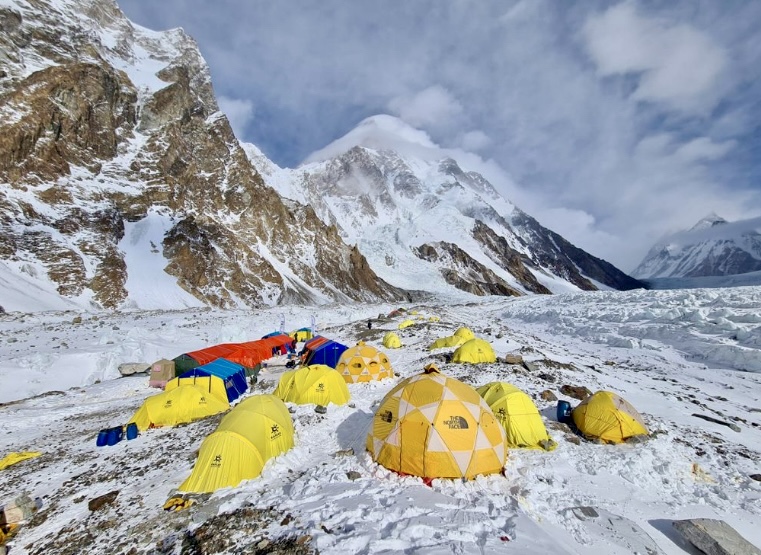
K2 Base Camp. Photo: Waldemar Kowalewski
The Swiss party
In the summer of 1992, Chantal Mauduit was a member of a Swiss party led by Peter Schwitter. The team included Beat Ruppen, Norbert Huser, and Rupert Ruckstuhl. This team was already at K2 when Balyberdin’s expedition arrived.
Schwitter’s party attempted the Abruzzi Ridge but aborted somewhere between 7,000m and 7,400m at the beginning of July because of bad weather. When the Swiss left, Mauduit joined the Russian–American expedition. However, she did not have a permit to do so, which caused her serious problems with the Pakistani authorities after the climb.
On June 28, a Mexican-New Zealand-Swedish expedition also arrived. They also chose the Abruzzi route.
The different teams coordinated for the route-fixing work.
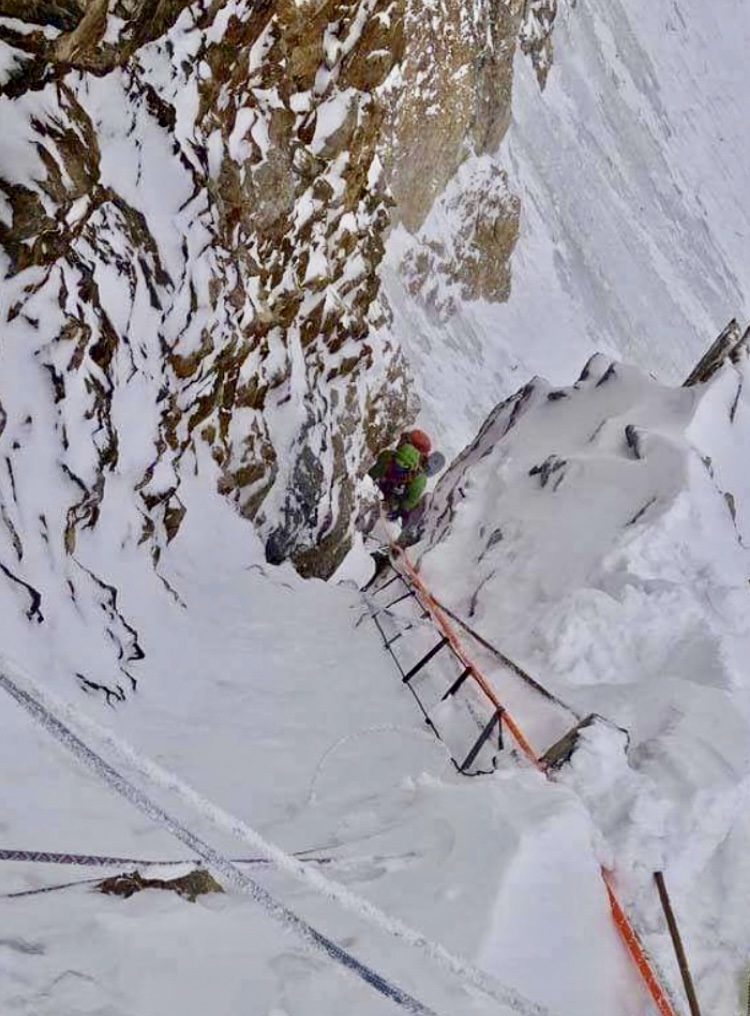
House’s Chimney. Photo: Denis Urubko
Unsettled weather
Kieser and Fischer established Camp 1 at 6,100m on June 25, and the teams progressed to Camp 2 at 6,700m at the beginning of July. On July 7, Kieser, Fischer, and Viesturs began fixing the route to Camp 3 through the Black Pyramid. They finished this section 10 days later, with Balyberdin and Kopeika fixing the last ropes at the top of the Black Pyramid.
The climbers faced unsettled weather. Short weather windows of three to four days were always followed by four or five days of snow and wind.
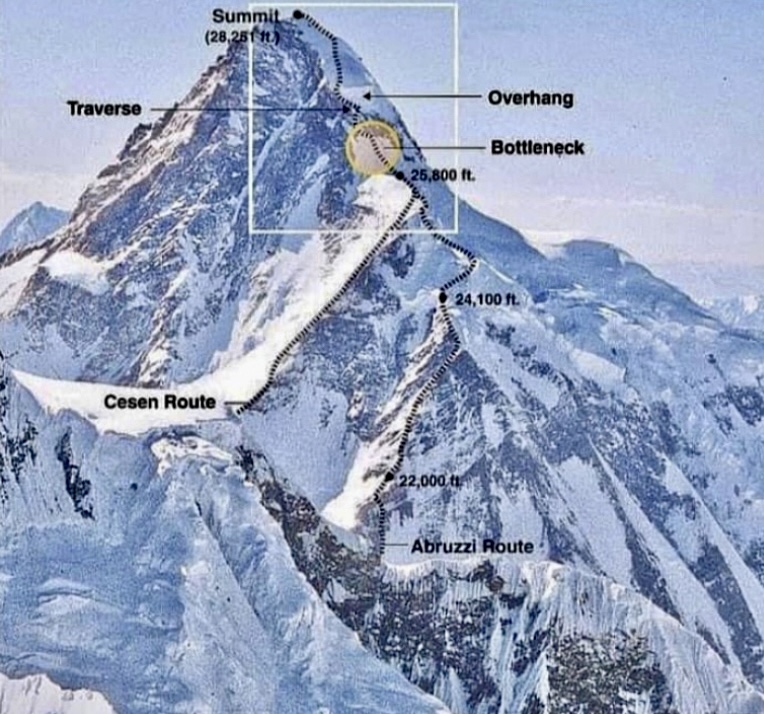
The Abruzzi route on K2. Photo: Team Ali Sadpara
On July 12, Fischer suffered a minor accident and dislocated his shoulder. The Russian doctor advised him to end his expedition, but a week later, Fischer was climbing again.
Viesturs, Kieser, and Neal Beidleman continued fixing the route above the Black Pyramid. At 7,410m, they set up Camp 3 in a small crevasse, soon moving 30m higher to avoid spindrift avalanches.
On July 21, Balyberdin, Beidleman, Kieser, Mauduit, and Viesturs left Camp 3 toward Camp 4. On the way, the weather deteriorated, and all the climbers except Balyberdin turned around. Balyberdin bivouacked at 7,500m. From there, he progressed each day a little higher, reaching 8,000m in whiteouts and deep snow. He didn’t set up Camp 4 and returned to Base Camp on July 24. K2 continued to receive a lot of snow.
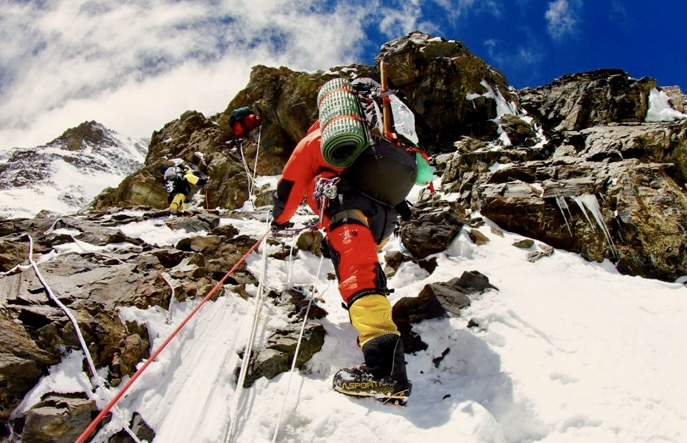
Climbers on the Black Pyramid. Photo: Madison Mountaineering
The first summit bid
On July 28, Balyberdin, Kieser, Beidleman, Kopeika, Mauduit, and Viesturs left Base Camp. By July 30, they arrived at Camp 3 in a windstorm. While Balyberdin and Kopeika continued, camping at 7,500m stormy weather, Mauduit and Kieser stayed at Camp 3, and Viesturs and Beidleman descended to Base Camp. On July 31, Balyberdin and Kopeika reached the base of the summit pyramid in chest-deep snow. Taking a risk, they camped at 8,000m, ready to push for the summit.
Meanwhile, Nikiforov reached Camp 3, where Kieser and Mauduit were camping.
On August 1 at 9:00 pm, Balyberdin and Kopeika finally topped out without bottled oxygen after an 18-hour nonstop climb. After summiting, Kopeika started the descent to Camp 4, but Balyberdin decided to bivouac below the summit. On August 3, Balyberdin and Kopeika made it down to Base Camp.
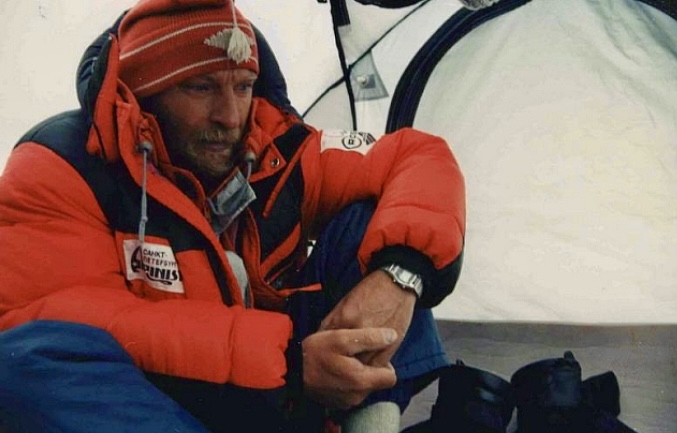
Vladimir Balyberdin at 8,000m on K2. Photo: 4sport.ua
The second summit bid
On August 2, Kieser, Mauduit, Nikiforov, and Peter and Robert Green climbed to Camp 4. But the next day, the Green brothers descended to Base Camp. On August 3, Nikiforov, Kieser, and Mauduit started their summit push without bottled oxygen.
Kieser was the first to leave high camp, followed a few hours later by Nikiforov. According to writer Jennifer Jordan, Mauduit wanted to wait for the sun as her toes were cold.
After reaching 8,450m, Kieser was exhausted from the deep, icy snow. An inner voice told him to abort his summit push.
Nikiforov made careful progress. Mauduit, who started her push later, was climbing fast and passed the two men at the Bottleneck.
On August 3 at 5:00 pm, Mauduit summited K2. Nikiforov topped out two hours later. Kieser stayed at the top of the Bottleneck, where he secured a safety line by anchoring the rope Nikiforov had left behind.
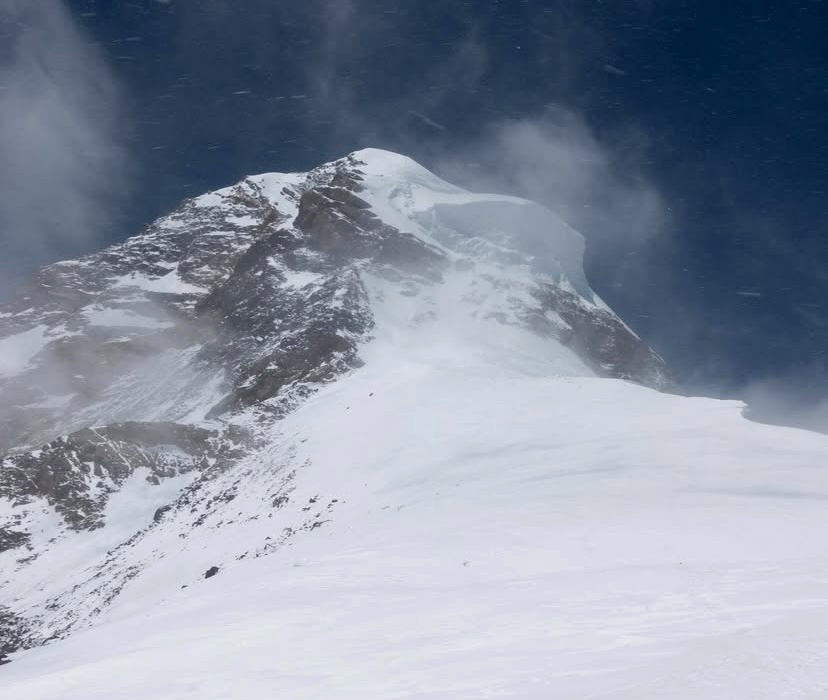
The upper section of K2 from Camp 4. Photo: David Roeske
Problems start
Mauduit started the descent a couple of hours before Nikiforov but was afraid to make the traverse alone. Instead, she decided to bivouac in a snowcave at 8,400m, the same cave Balyberdin and Kopeika had used two days earlier.
When Nikiforov arrived a few hours later, he had to convince Mauduit to follow him down. Both climbers were exhausted, and Mauduit’s eyes, legs, and arms started to fail. With great difficulty, Nikiforov inched her toward Camp 4.
While Nikiforov was leading Mauduit, his crampon came loose, causing him to fall several meters. Kieser’s security rope saved his life.
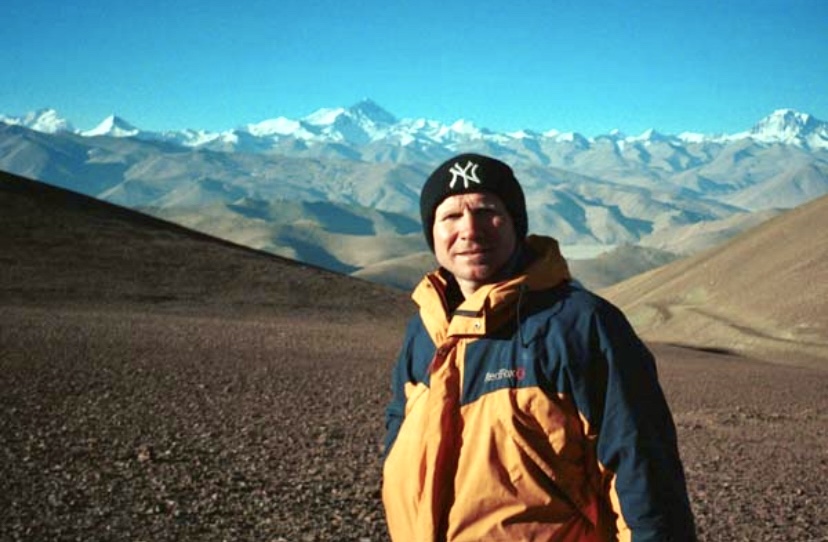
Alexey Nikiforov. Photo: Elena Laletina/Russian Climb
Nikiforov and Kieser started the descent from Camp 4 on August 4, supporting Mauduit between their shoulders. At Camp 4, the exhausted Nikiforov continued descending, and Kieser contacted Fischer and Viesturs on the radio. Fischer and Viesturs were in Camp 3 preparing for their summit push, but they said they would help.
Kieser moved Mauduit toward Camp 3 despite the bad weather. Mauduit was already snowblind, and Kieser knew there was no time to lose. They had to bivouac at the edge of the shoulder. Meanwhile, Fischer and Viesturs attempted to climb up.
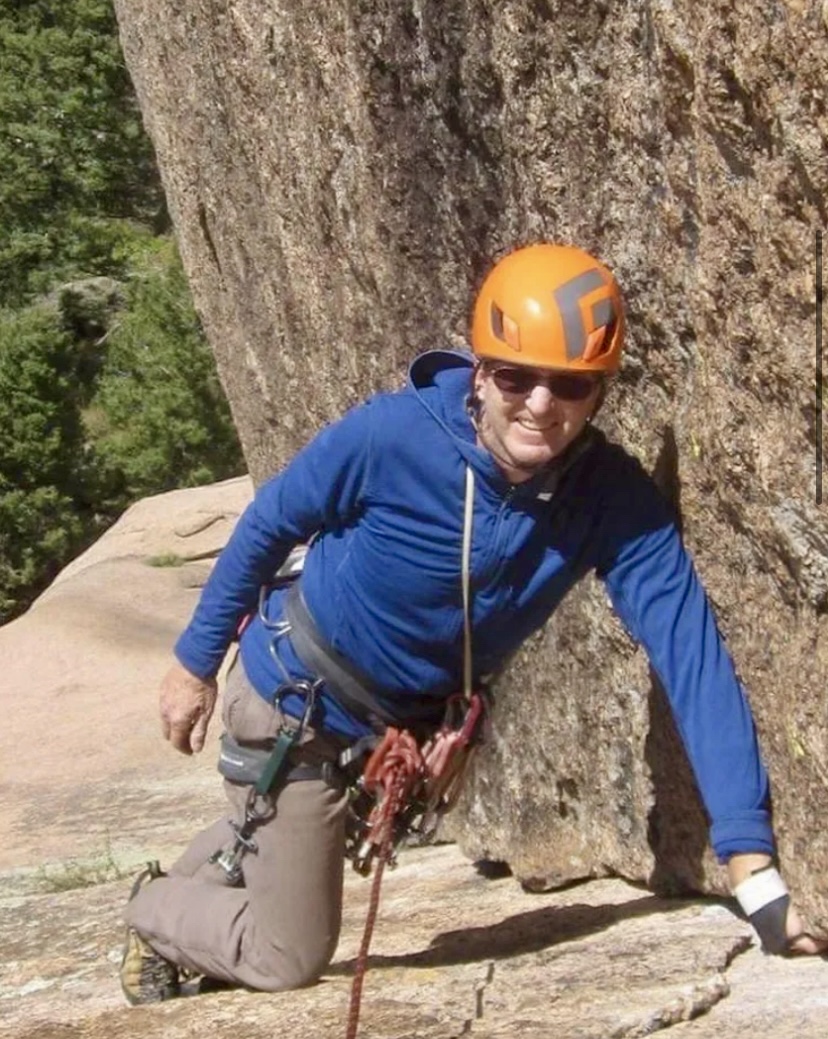
Thor Kieser. Photo: Thor Kieser
Avalanche hits Fischer
On the morning of August 5, Viesturs and Fischer were trying to reach Kieser and Mauduit when, just below the Shoulder, a spindrift avalanche swept Fischer 60m. Thankfully, Viesturs self-arrested and secured Fischer.
Kieser and Mauduit continued descending, and after many terrible hours, they found the top of the fixed ropes near Camp 3. Here, they finally met Viesturs and Fischer.
The group then assisted Mauduit to Camp 1, where Dan Mazur and Charley Mace took her the rest of the way to Base Camp.
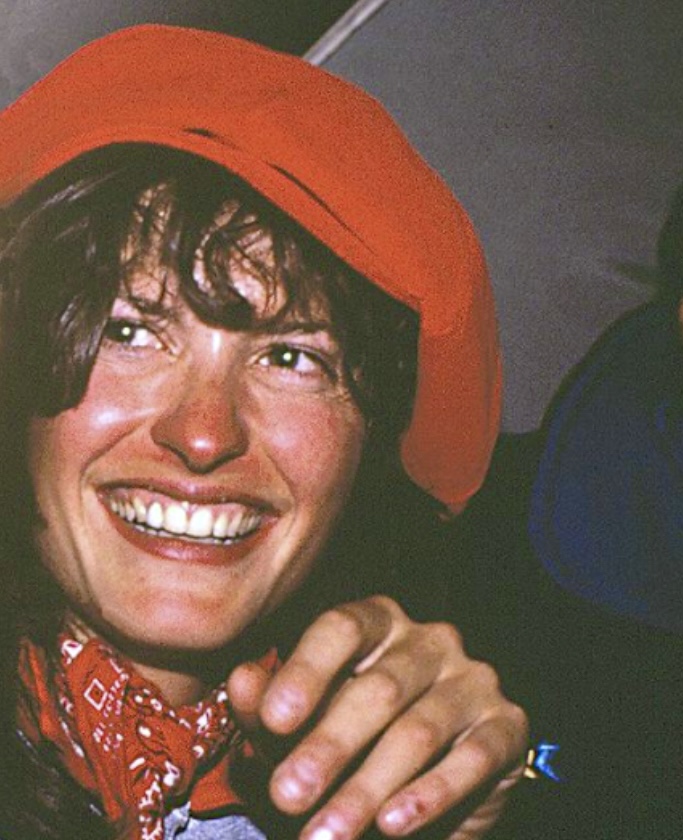
Chantal Mauduit. Photo: Lojanci.org
Aftermath
Mauduit never thanked her rescuers or publicly acknowledged the rescue.
The rescue was a team effort, all completed without bottled oxygen.
We recommend reading two books about the climb: No Shortcuts To The Top by Ed Viesturs and David Roberts, and Savage Summit by Jennifer Jordan.
